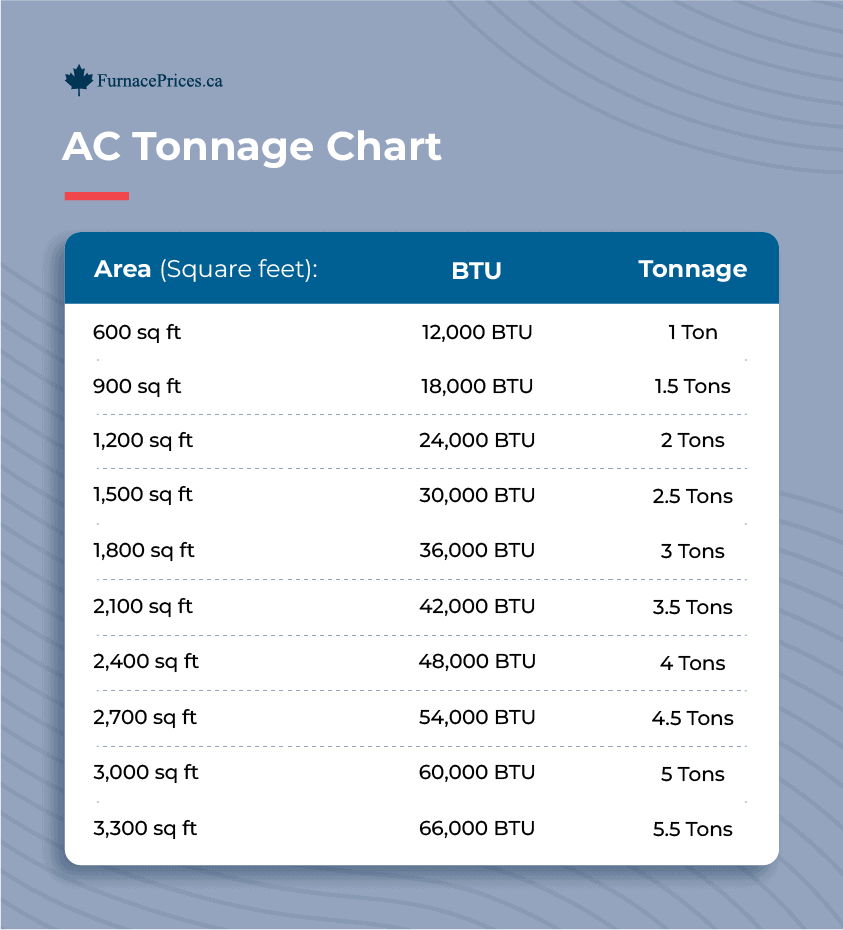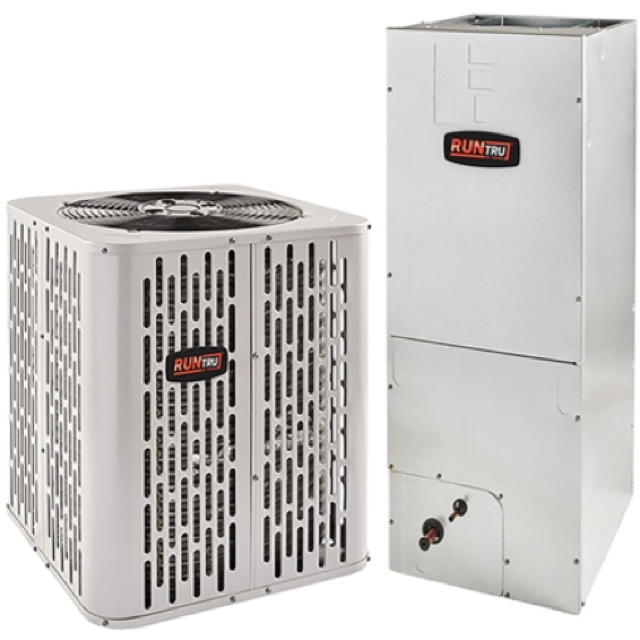Are you trying to figure out how powerful your 5 ton air conditioner really is? Understanding the number of BTUs (British Thermal Units) in your unit can help you make smarter choices for your cooling needs.
Whether you’re planning to buy a new AC or just want to know if your current one is enough for your space, this simple guide will clear up the confusion. Keep reading to discover exactly how many BTUs a 5 ton air conditioner has and why that number matters for your comfort and energy bills.
Btu Basics
BTU stands for British Thermal Unit. It measures heat energy.
We use BTUs to understand how much cooling or heating an air conditioner can provide.
What Is Btu
A BTU is the amount of heat needed to raise one pound of water by one degree Fahrenheit.
- BTU measures energy, not power.
- It helps compare different air conditioners.
- A higher BTU means more cooling ability.
- BTUs show the size of the cooling needed for a room.
Btu And Cooling Power
A 5 ton air conditioner has a specific BTU rating. One ton equals 12,000 BTUs.
| Air Conditioner Size (Tons) | BTU Rating |
| 1 Ton | 12,000 BTU |
| 2 Ton | 24,000 BTU |
| 3 Ton | 36,000 BTU |
| 4 Ton | 48,000 BTU |
| 5 Ton | 60,000 BTU |
This means a 5 ton air conditioner can remove 60,000 BTUs of heat per hour.

Credit: www.furnaceprices.ca
Tons To Btu Conversion
Air conditioners use tons to describe their cooling power. This unit helps people understand the size of the AC needed. Tons relate directly to BTUs, which measure heat removal.
Knowing how to convert tons to BTU is useful for buying or comparing air conditioners. This guide explains the standard rate and calculates BTU for a 5-ton unit.
Standard Conversion Rate
One ton of air conditioning equals 12,000 BTUs per hour. This value is standard across the industry. It comes from the amount of heat needed to melt one ton of ice in 24 hours.
- 1 Ton = 12,000 BTU/hr
- 2 Tons = 24,000 BTU/hr
- 3 Tons = 36,000 BTU/hr
- 4 Tons = 48,000 BTU/hr
- 5 Tons = 60,000 BTU/hr
Calculating Btu For 5 Tons
To find BTU for 5 tons, multiply the tons by the standard rate. Use this simple formula to get the cooling power in BTUs.
| Tons | BTU per Hour |
|---|---|
| 5 | 5 × 12,000 = 60,000 BTU/hr |
This means a 5-ton air conditioner removes 60,000 BTUs of heat each hour. This value helps you choose the right size unit for your space.
Factors Affecting Btu Needs
BTU stands for British Thermal Unit. It measures how much heat an air conditioner can remove from a room. The size of your air conditioner depends on many factors.
Knowing what affects BTU needs helps you pick the right 5 ton air conditioner. This way, it cools your space well and saves energy.
Room Size And Layout
The size of your room is the main factor for BTU needs. A bigger room needs more cooling power. The shape and layout matter too. Open spaces or rooms with high ceilings need more BTUs.
- Measure the length, width, and height of the room.
- Count the number of doors and windows.
- Note if the room is open to other areas.
- Check if the ceiling is higher than 8 feet.
Insulation And Windows
Good insulation keeps cool air inside and hot air out. Poor insulation makes your AC work harder. Windows can let in heat if they are not shaded or double glazed.
| Factor | Effect on BTU Needs |
| High-quality insulation | Reduces BTU needed |
| Poor insulation | Increases BTU needed |
| Single-pane windows | Increases BTU needed |
| Double-pane or tinted windows | Reduces BTU needed |
Climate Considerations
Where you live affects how much cooling you need. Hotter and more humid places need higher BTU air conditioners. Cooler climates need less cooling power.
Consider these climate factors:
- Average summer temperature
- Humidity levels
- Sun exposure during the day
- Wind and air flow around the building

Credit: cedarshvac.com
Choosing The Right Air Conditioner
Choosing the right air conditioner is important for comfort and savings. A 5 ton air conditioner can cool large spaces well.
Understanding BTU, energy ratings, and types helps pick the best unit for your needs.
Matching Btu To Space
BTU stands for British Thermal Unit. It measures how much heat an air conditioner can remove.
A 5 ton air conditioner usually has about 60,000 BTU. This suits large rooms or open areas.
- Up to 2,000 square feet needs about 24,000 BTU
- 3 ton units have about 36,000 BTU
- 5 ton units work well for 3,000 to 3,600 square feet
- Too much or too little BTU wastes energy and money
Energy Efficiency Ratings
Energy efficiency ratings show how well an air conditioner uses electricity.
| Rating | Meaning | Benefit |
| SEER (Seasonal Energy Efficiency Ratio) | Measures cooling efficiency over a season | Lower electric bills |
| EER (Energy Efficiency Ratio) | Measures efficiency at peak cooling | Better performance on hot days |
| Energy Star Certified | Meets government efficiency standards | Environmentally friendly and cost-saving |
Types Of 5 Ton Air Conditioners
Several types of 5 ton air conditioners fit different needs and spaces.
- Central Air Conditioners: Cool entire homes or buildings
- Split Systems: Have indoor and outdoor units, quiet operation
- Packaged Units: All parts in one box, good for small spaces
- Ductless Mini-Splits: No ducts needed, easy to install in rooms
Common Misconceptions
Many people wonder how many BTUs are in a 5 ton air conditioner. The answer is 60,000 BTUs because 1 ton equals 12,000 BTUs. Some misunderstand how size affects cooling.
Choosing the right size is key. Too big or too small causes problems. We will explain oversizing and undersizing issues.
Oversizing Issues
Big air conditioners cool rooms fast but do not run long enough. This causes poor humidity control and discomfort.
Oversized units waste energy and increase electricity bills. They also wear out faster due to frequent starts and stops.
- Short cooling cycles
- High energy use
- Increased wear and tear
- Poor humidity control
Undersizing Risks
Small air conditioners run longer to cool a room. This leads to higher energy use and more noise.
Undersized units may never reach the desired temperature. This makes the room uncomfortable and can shorten the unit’s life.
- Long run times
- High energy bills
- Inconsistent cooling
- Possible system damage
Energy Consumption And Cost
Understanding the energy use of a 5 ton air conditioner helps manage electricity bills. It shows how much power the unit consumes during operation.
Knowing the cost impact helps plan for monthly expenses. It also encourages efficient use to save money and energy.
Power Usage Of 5 Ton Units
A 5 ton air conditioner typically uses about 60,000 BTU per hour. This size unit can consume between 4,000 and 5,000 watts when running.
- Power rating varies by model and efficiency.
- Energy use depends on how long the unit runs.
- Higher SEER ratings mean lower electricity use.
Estimating Monthly Costs
Monthly cost depends on the unit’s power use and your electricity rate. You can estimate costs by using the running hours and power consumption.
| Item | Value |
| Power Consumption (Watts) | 4500 W |
| Average Daily Use (Hours) | 8 |
| Days per Month | 30 |
| Electricity Rate | $0.12 per kWh |
| Estimated Monthly Cost | $129.60 |
To calculate, multiply power use by hours and days, then convert to kilowatt-hours. Multiply kWh by your electricity rate for cost.
Maintenance Tips
Keeping your 5 ton air conditioner in good shape saves energy and money. Regular care helps it run better and last longer.
Simple maintenance steps can prevent big problems. Follow these tips to keep your air conditioner working well all year.
Optimizing Performance
Clean filters and coils often to improve airflow. Dirty parts make your unit work harder and use more power.
- Change or clean air filters every 1-3 months
- Clear debris around outdoor condenser unit
- Check refrigerant levels and refill if needed
- Keep vents and ducts free from blockages
- Use a programmable thermostat to save energy
Extending Unit Lifespan
Regular checks prevent damage and extend your AC’s life. Fix small issues before they become costly repairs.
| Maintenance Task | Frequency | Benefit |
| Inspect electrical connections | Annually | Prevents shorts and failures |
| Lubricate moving parts | Every year | Reduces wear and noise |
| Clean evaporator and condenser coils | Yearly | Improves cooling efficiency |
| Check and seal duct leaks | Every 2 years | Prevents energy loss |
| Schedule professional tune-up | Annually | Ensures overall system health |

Credit: www.master.ca
Frequently Asked Questions
How Many Btu Does A 5 Ton Air Conditioner Have?
A 5 ton air conditioner has 60,000 BTUs. One ton equals 12,000 BTUs. This measurement shows the cooling capacity of the AC unit.
What Size Room Does A 5 Ton Ac Cool?
A 5 ton AC can cool about 2,000 to 3,000 square feet. It’s suitable for large rooms or small homes. Proper sizing ensures efficient cooling and energy use.
How To Convert Tons To Btu In Air Conditioners?
To convert tons to BTU, multiply tons by 12,000. For example, 5 tons times 12,000 equals 60,000 BTUs. This helps understand the cooling power of an AC unit.
Why Is Btu Important In Choosing An Air Conditioner?
BTU indicates the cooling capacity of an air conditioner. Choosing the right BTU ensures effective cooling and energy efficiency. An incorrect BTU size can lead to discomfort or high energy bills.
Conclusion
A 5-ton air conditioner usually has about 60,000 BTUs. This amount of cooling suits large rooms or homes. Knowing BTUs helps pick the right AC size. Too many BTUs waste energy and money. Too few BTUs will not cool well.
Check your space size before buying. This simple step saves comfort and cost. Keep your home cool and efficient all summer. Understanding BTUs makes choosing easy and smart.
